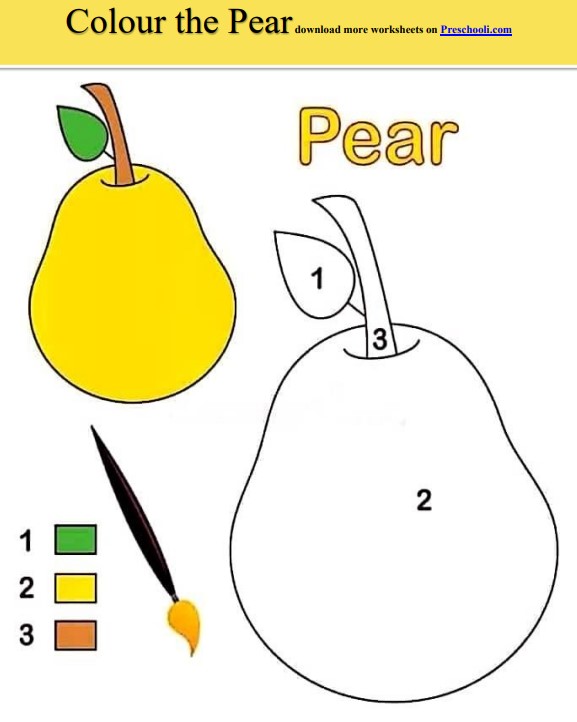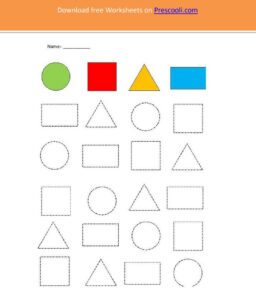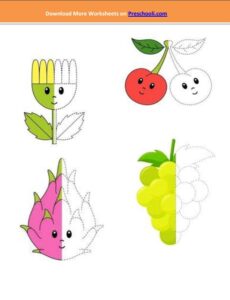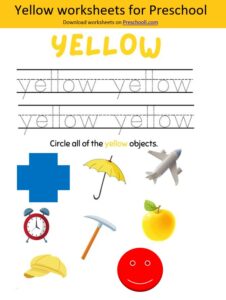The Delight of Learning Through Colors: Engaging Worksheets for Preschoolers
color worksheets for preschool: In the vibrant realm of preschool education, color recognition stands as an indispensable developmental milestone. The exploration of colors is not only a joyous endeavor but also a crucial foundation for cognitive development. Parents, teachers, and caregivers alike recognize the significance of introducing colors to young minds in a captivating and effective manner. What could be more engaging than a meticulously designed color worksheet that sparks the imagination and cultivates understanding?
Encouraging children to interact with colors through various activities, including worksheets, is instrumental in their educational odyssey. By infusing learning with play, these worksheets can be transformed into powerful tools, fostering not only color recognition but also fine motor skills and critical thinking. For an educator, a well-crafted worksheet is a roadmap, guiding children along the path of learning and discovery.
This article is for those who strive to provide the best educational materials to our future leaders. We’ll explore the enchanting world of color worksheets for preschoolers, sharing tips on how to create and implement worksheets that inspire and educate. From the berry-reds to the sky-blues, we are about to take a kaleidoscopic voyage into the wonders of color education.
Understanding the Importance of Preschool Color Worksheets
Color worksheets are gateways to a world of visual richness. They present an array of benefits that go beyond simply naming the colors. Here’s a comprehensive look at how they contribute to a child’s development:
Color Recognition
The most apparent advantage of preschool color worksheets is instilling recognition and association of different colors. Children learn to distinguish between shades and connect them to everyday objects and experiences.
Fine Motor Development
Completing a worksheet involves holding a crayon or pencil and controlling its movement, which contributes to the development of fine motor skills. Precise movements to color inside the lines encourage hand-eye coordination and dexterity.
Cognitive Growth
Engaging with colors enhances a child’s cognitive abilities. Categorizing and sorting colors require the use of logical thinking, a precursor to more complex problem-solving skills.
Creativity
Coloring offers a canvas for self-expression and encourages creativity. It paves the way for personal interpretation of tasks and the application of unique color combinations.
Language Acquisition
Describing colors adds to a child’s vocabulary, contributing to the subtler aspects of language acquisition. As they learn new words, they also expand their ability to communicate and articulate their thoughts.
When considering the role of worksheets in preschool color education, it’s clear they serve as multi-faceted tools, molding young minds in a plethora of ways.
Designing Effective Color Worksheets for Preschoolers
In order for color worksheets to be effective, they must be designed with the child in mind. Here are some key considerations when creating worksheets for color recognition:
Keep It Simple
Simplicity is the essence of early childhood education. The layout of your worksheets should be uncluttered, with plenty of white space. Extraneous elements could potentially distract or overwhelm the child.
Use Familiar Objects
Utilize illustrations that are familiar to the preschooler. Associating colors with objects the child encounters in their daily life reinforces learning and aids in retention.
Offer a Variety of Shapes
Incorporate a diverse set of shapes, from simple circles and squares to more complex geometric forms as children progress. This helps in broadening their comprehension of how colors interact with different structures.
Encourage Graded Difficulty
Start with basic color-to-object matching and gradually introduce more complex tasks, such as recognizing two colors in one object or applying a specific color to multiple similar objects.
Provide Guidance
For beginners, it’s helpful to have a color key or direction on the worksheet. As the child advances, these supports can be phased out to encourage more independent work.
Designing worksheets with these principles ensures they will be not only educational but also enjoyable and user-friendly for preschoolers.
Implementing Color Worksheets in the Classroom or Home
The successful implementation of color worksheets relies on creativity and flexibility. Consider the following strategies to make the most out of these educational materials:
Themed Worksheet Days
Designating days to particular colors can be a fun way to explore both the color and the related objects. For example, ‘Red Day’ could feature worksheets with cherries, apples, and fire trucks.
Cultural and Seasonal Relevance
Align color themes with cultural and seasonal events. This provides context and a deeper connection for the child. ‘Green Day’ could coincide with Earth Day, featuring recyclable bins and globe coloring.
Group Activities
Collaborative coloring activities can be productive and fun. Organize worksheets that require teamwork, such as a large rainbow everyone can add a stripe to, fostering social interactions and group dynamics.
Interactive Learning Stations
Set up learning stations with color worksheets and related art materials. This allows children to progress at their own pace and maximizes hands-on learning experiences.
Follow-Up Discussions and Artwork
Use the completed worksheets as a launching point for discussions on the colors or related topics. Encourage children to use their favorite color from the worksheet in a freeform art project.
By integrating color worksheets as part of a varied and dynamic educational repertoire, both educators and children can encounter a rewarding learning experience.
Making It Memorable: Creative Ideas for Color Worksheets
To truly stand out, color worksheets for preschoolers should not only be informative but also memorable. Here are some inventive ideas to infuse creativity into your worksheets:
Shape into a Story
Construct a sequential storyline with characters and settings that evolve with each colored element. This engages children in a narrative and provides a context for each color’s role in the tale.
Create Your Own Color Chart
Instead of traditional worksheets, make a chart where children can place swatches of actual colors they’ve matched from objects or paint samples. It’s tactile and allows for storage of the chart, so they can track their color-learning progress.
Rainbow Road
Design a worksheet game that takes children on a ‘Rainbow Road’ where they solve color puzzles to reach a pot of gold (or any colorful treasure). This could involve a series of worksheets that they must complete in a certain order.
Garden of Colors
Have children create a ‘Garden of Colors’ where each part they color in represents different plants or flowers. It’s a practical connection between colors and nature where children can care for and watch their garden grow as they learn more colors.
By infusing imagination into the design of color worksheets, you can ensure that the learning experience is engaging and leaves a lasting impression.
The Technicalities of Color Worksheets
While creativity reigns supreme, there are technical aspects to consider when developing color worksheets:
Use High-Quality Paper
The paper should be sturdy enough to withstand the coloring and erasing typically done by preschoolers. A heavier stock with a slight rough texture can improve grip and control for little hands.
Safe Coloring Instruments
Only non-toxic crayons, markers, and coloring pencils should be used. Additionally, consider using washable materials to ease the cleanup process.
Lamination Options
For reuse or durability, consider laminating worksheets. With a few dry-erase markers, children can explore colors on the same worksheet multiple times.
Final Thoughts on the Power of Color Worksheets for preschool
The world of colors is a boundless canvas for a child’s imagination. Educational materials, like color worksheets, play a pivotal role in shaping how young learners perceive and interact with these essential elements of the visual spectrum.
For educators and parents, creating an environment that celebrates and respects the learning process is as important as the content itself. The end goal is not just to teach children about colors but to instill in them a lifelong love for learning and discovery. Color worksheets, when thoughtfully designed and implemented, not only aid in academic growth but also contribute to a child’s overall development.
Through the use of tailored worksheets and inventive teaching methods, preschoolers can absorb the wonderful world of colors with excitement and confidence. By brightening their educational horizons, we set them on a path towards a future where the comprehension of colors is not just an ability, but a part of their identity. For every stroke of color on these sheets, a young artist’s understanding and appreciation of the world is affirmed and elevated, one hue at a time.
Join our Facebook Group



